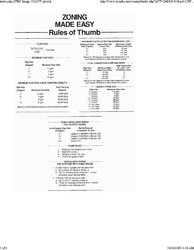I have 150 feet one inch central boiler pex in the ground and it rises 8 feet to a second floor mechanical room. It runs through a flat plate heat exchanger, with 3/4†ports. oops. Im assuming my HX ports are my most limiting limiting choke point in the line, second is the buried pex. Im not quite seeing why you cant use powerfull pump to drive the water through faster.
I'm not in the business, just a user like lots of others, and willing to help as able - so I don't hire out. I see the Empyre Pro 200 is advertised as a gasification boiler, open system, not pressurized, 230,000 BTUh peak, 110,000 BTUh over an 8 hour burn. I have no knowledge/experience with this boiler. My direct experience is based mostly on the Tarm, which is closed system, pressurized. There are a number of other gasification boilers that operate on the same principles as the Tarm. I have a bias that favors boilers designed from the start to be gasification boilers, like the Tarm, and with a history of success, and I am a bit skeptical of outdoor wood boilers (OWB) that the mfrs now have redesigned to be gasification boilers. From what I have read, results have been mixed on these redesigned boilers. I'm not dissing your choice, you may have a great boiler -- just be aware of this bias of mine.
Is your house side of the HX also an open system? or is it a closed system and pressurized?
I assume you have not had any elevation issue with the boiler lower than the house. This can cause a problem. What circulator have you been using (make, model)?
I see a possible red flag in the 3/4" ports plate HX. What are the dimensions and number of plates in your HX? Dimensions, port size, and number of plates determine what a plate HX is able to do at various gpm flow rates.
When you say 150' of 1" pex in the ground, is that round trip (150' total) or one way (300' total)?
Can you post a diagram of your system?
Do you plan to add any hot water storage to aid your boiler in delivering peak output, which may be more than you need, and then draw from storage to supplement your boiler to meet demand as the boiler fire goes out or to cover demand until the next time you fire your boiler?
It certainly is possible to design a system to deliver a specific BTU load. Perhaps since you already have bought a new boiler, it might not be unreasonable to design the system around the capability of your boiler to enable you to use it most efficiently. In doing this though, there is no guaranty that you will get the heat you need or want for your house.
I'm not experienced at all in using pumps in hot water systems, so any question into that area is beyond me. My experience is limited to using circulators, which are not literally pumps but instead just move water (circulate) in a closed loop.


